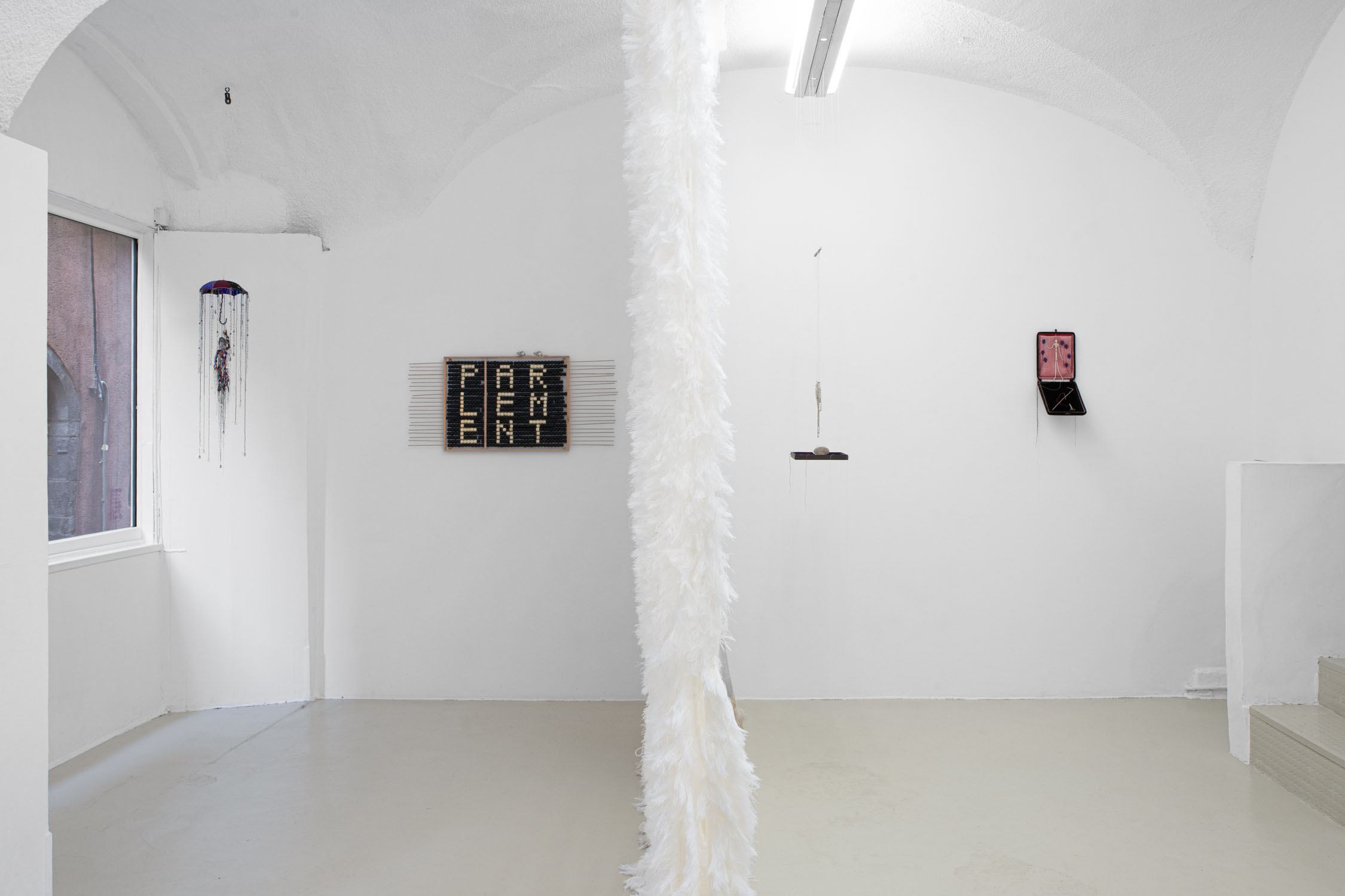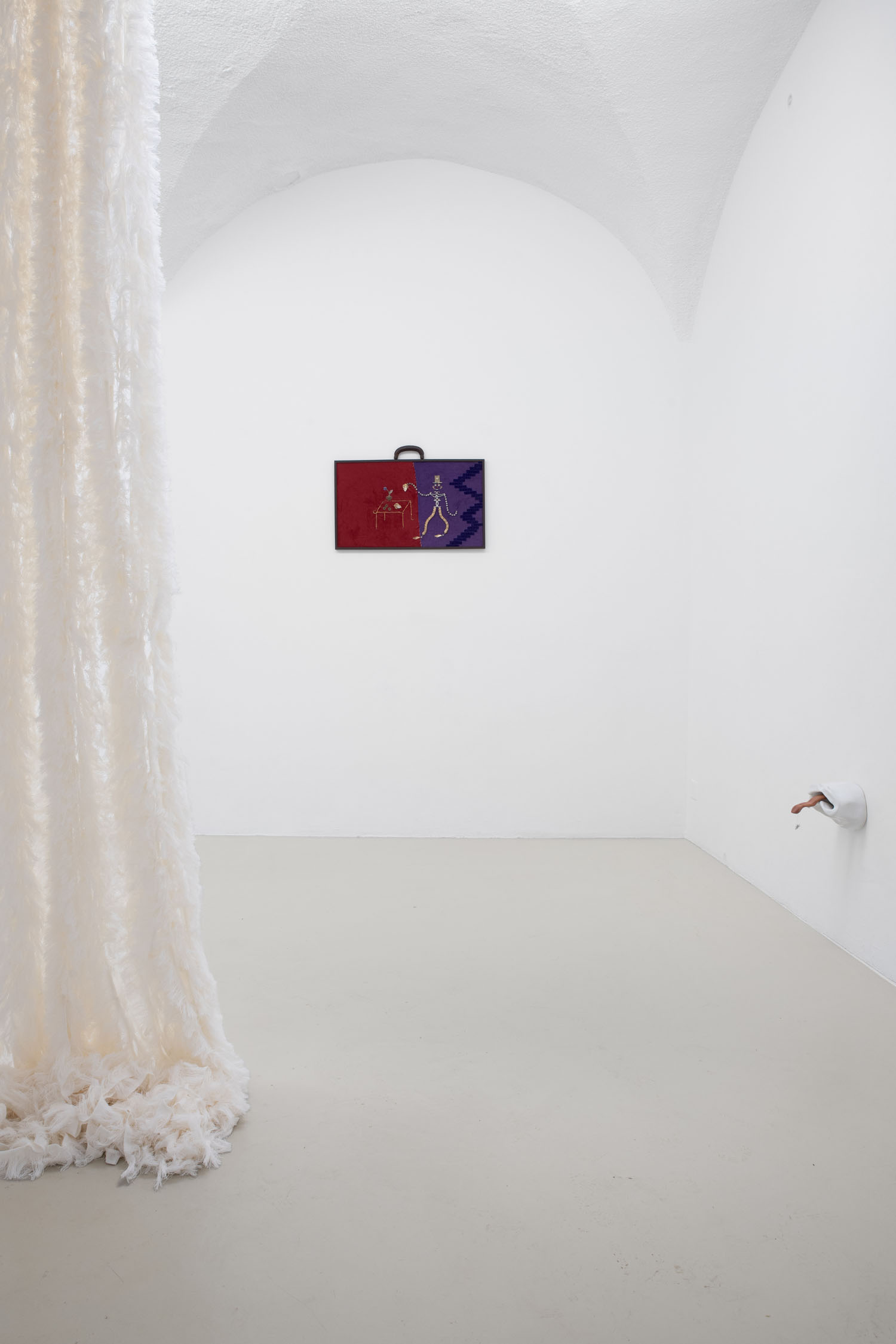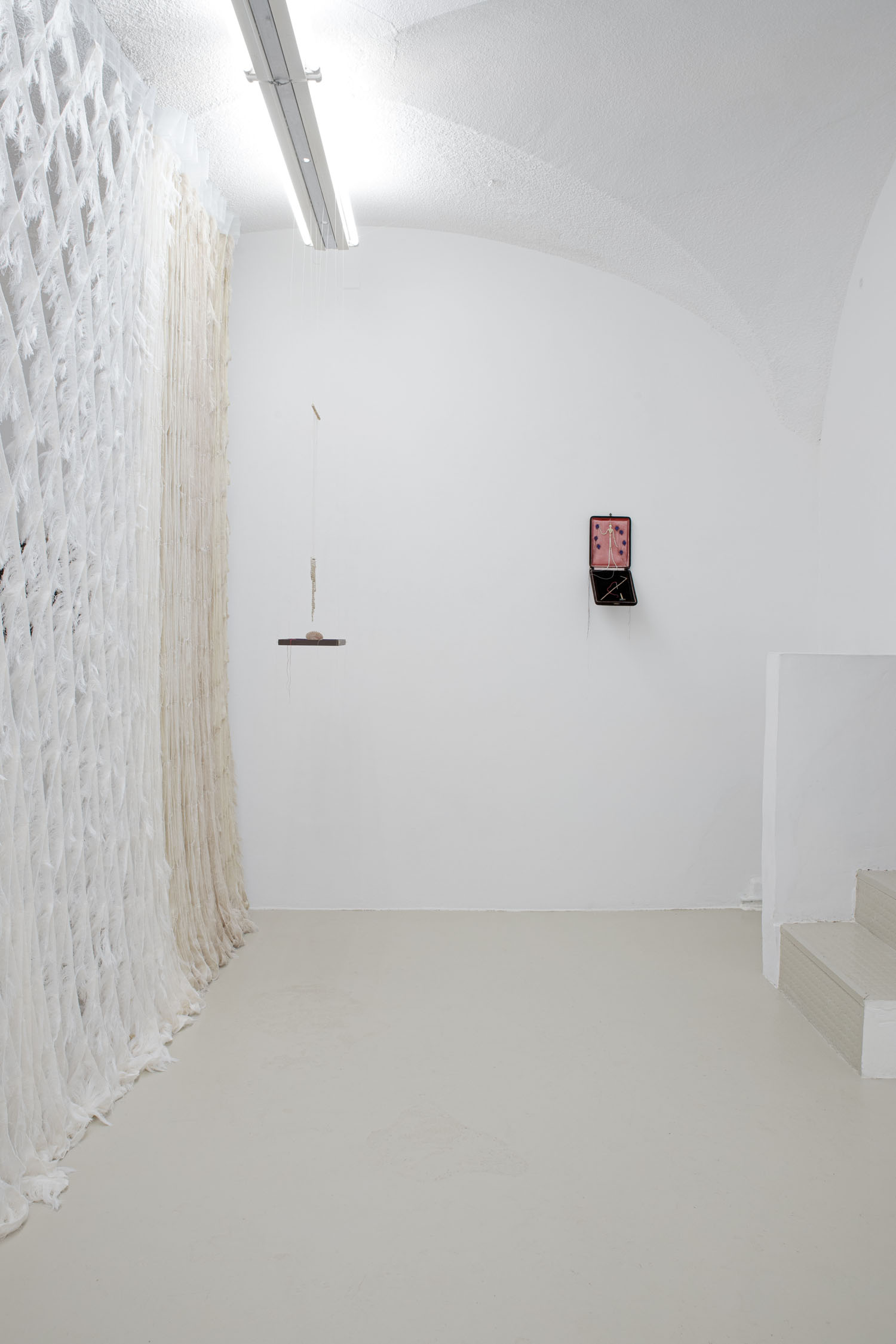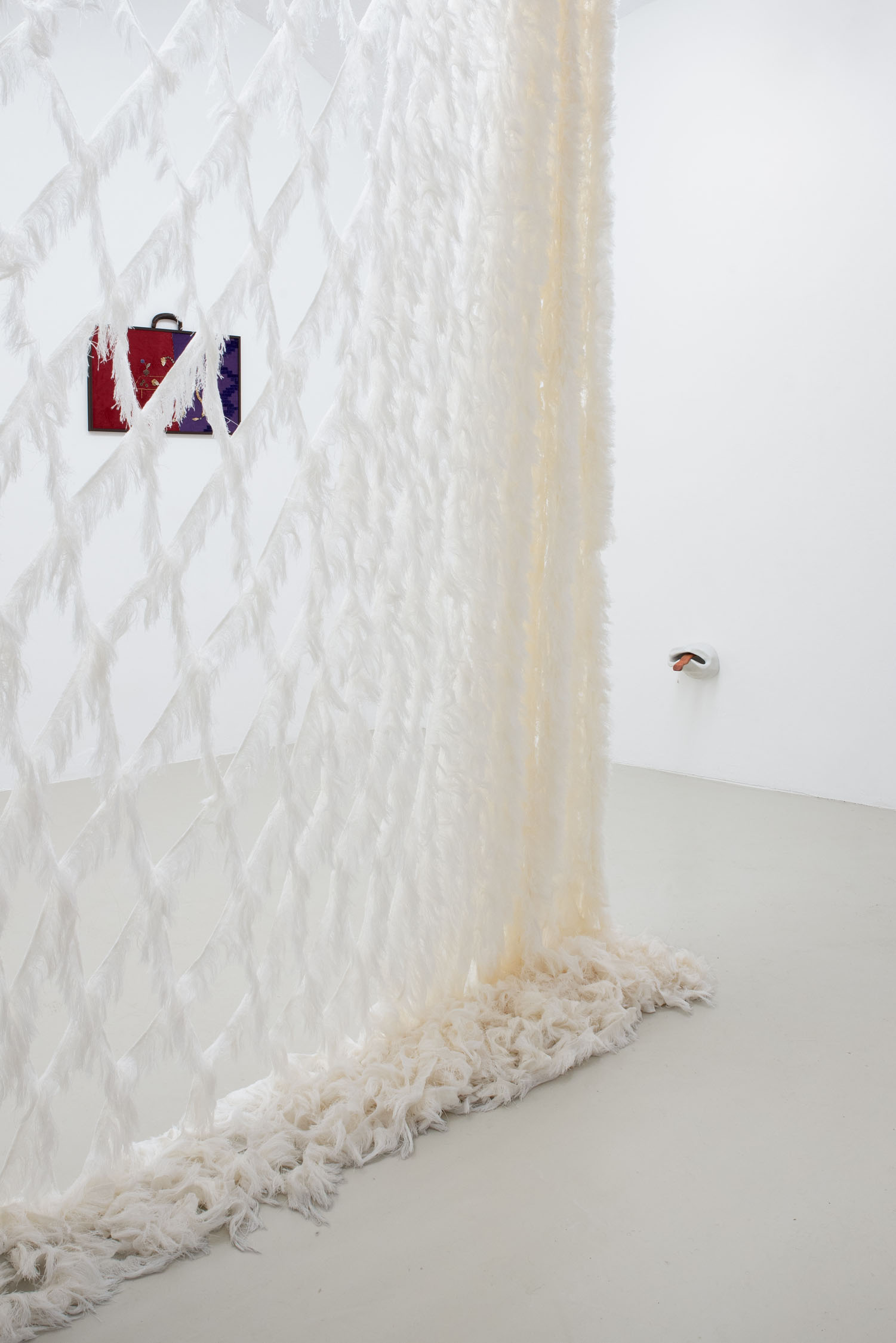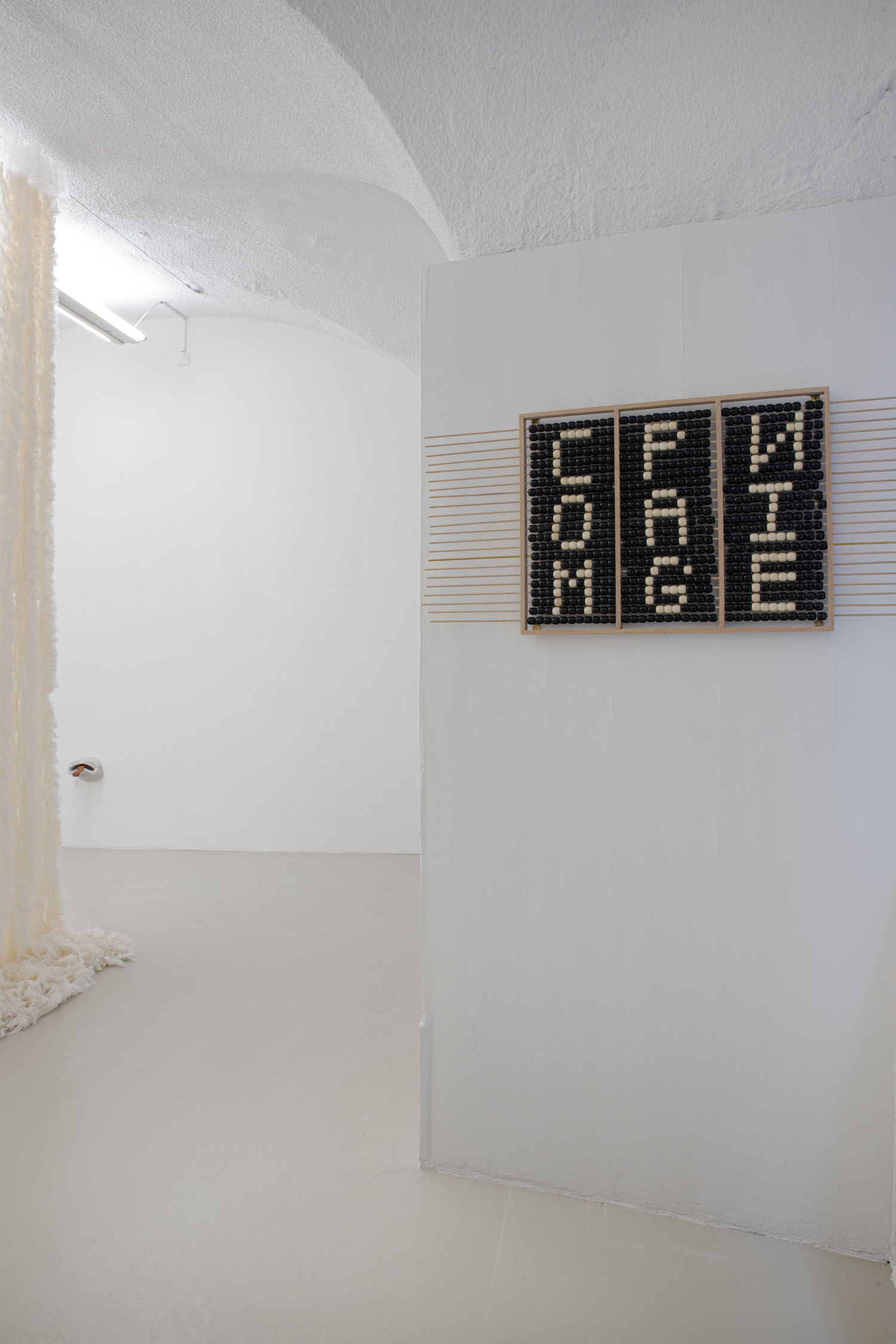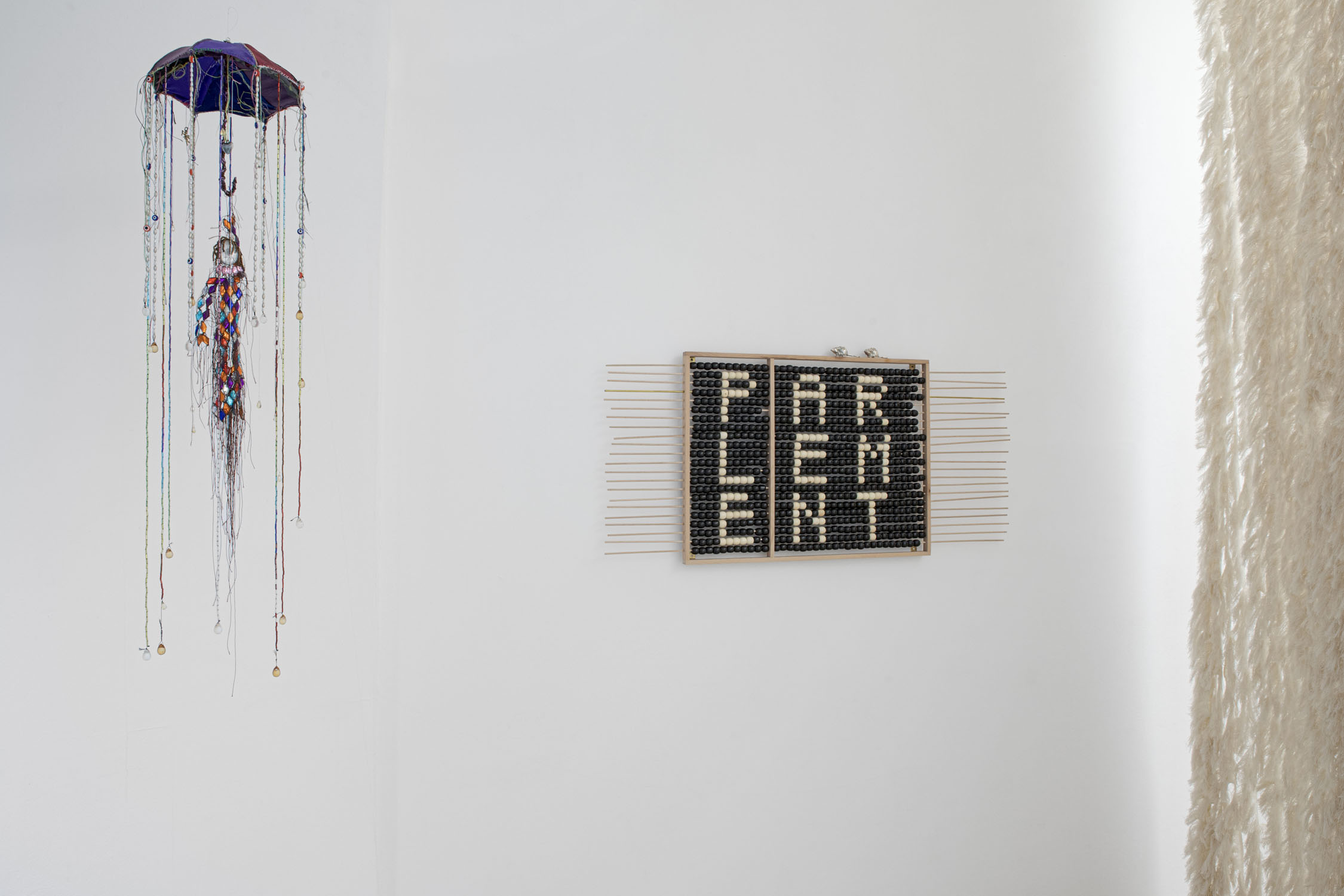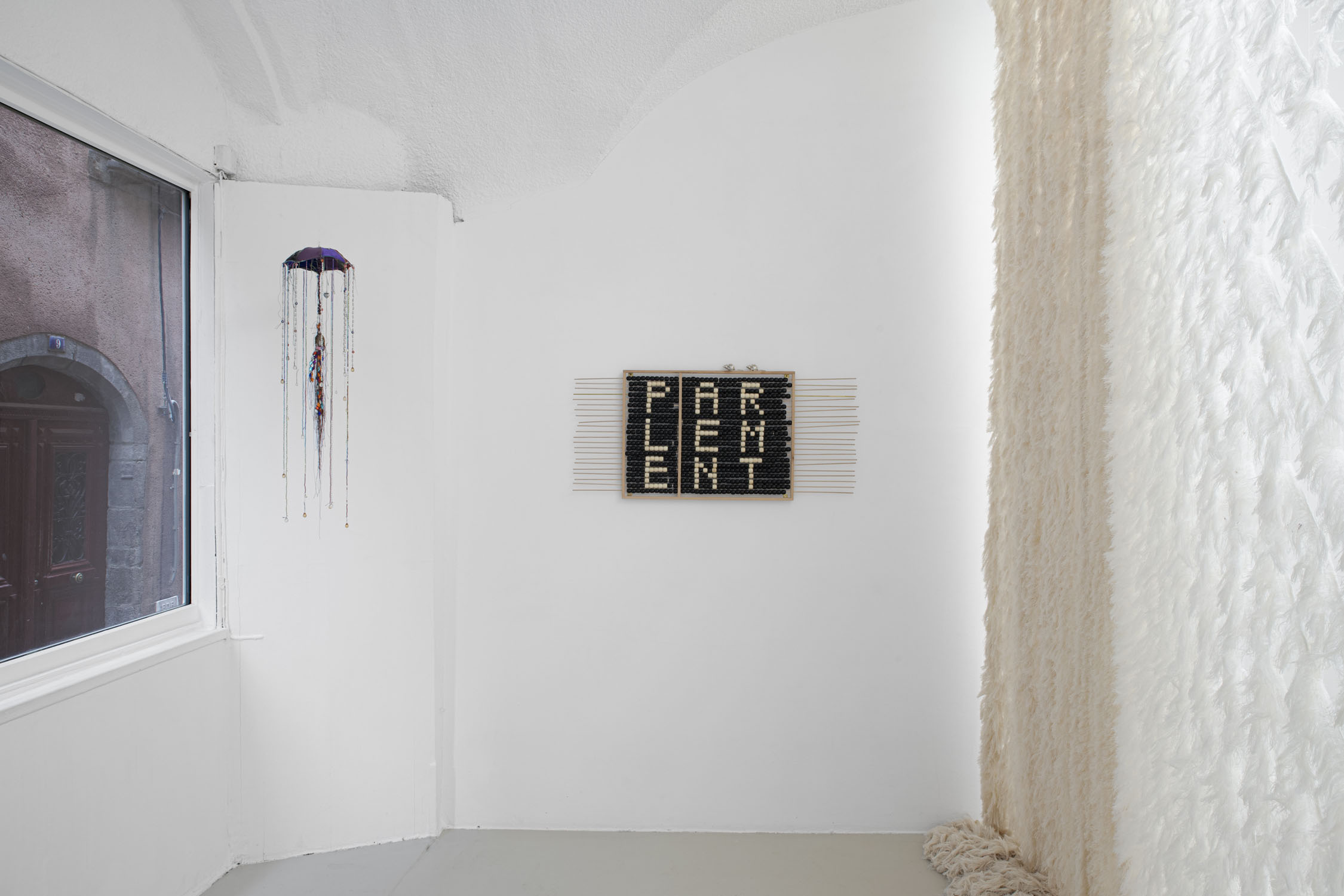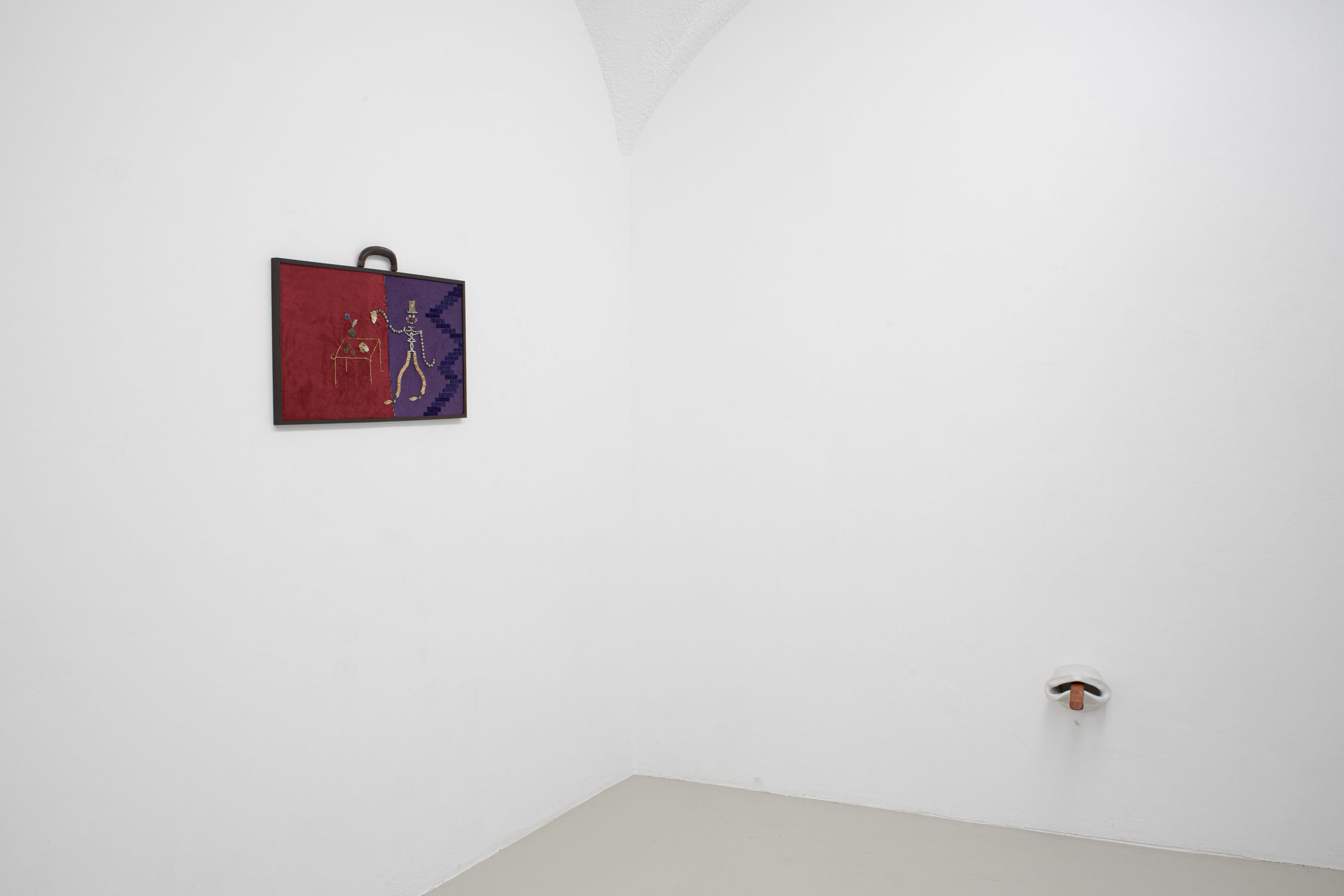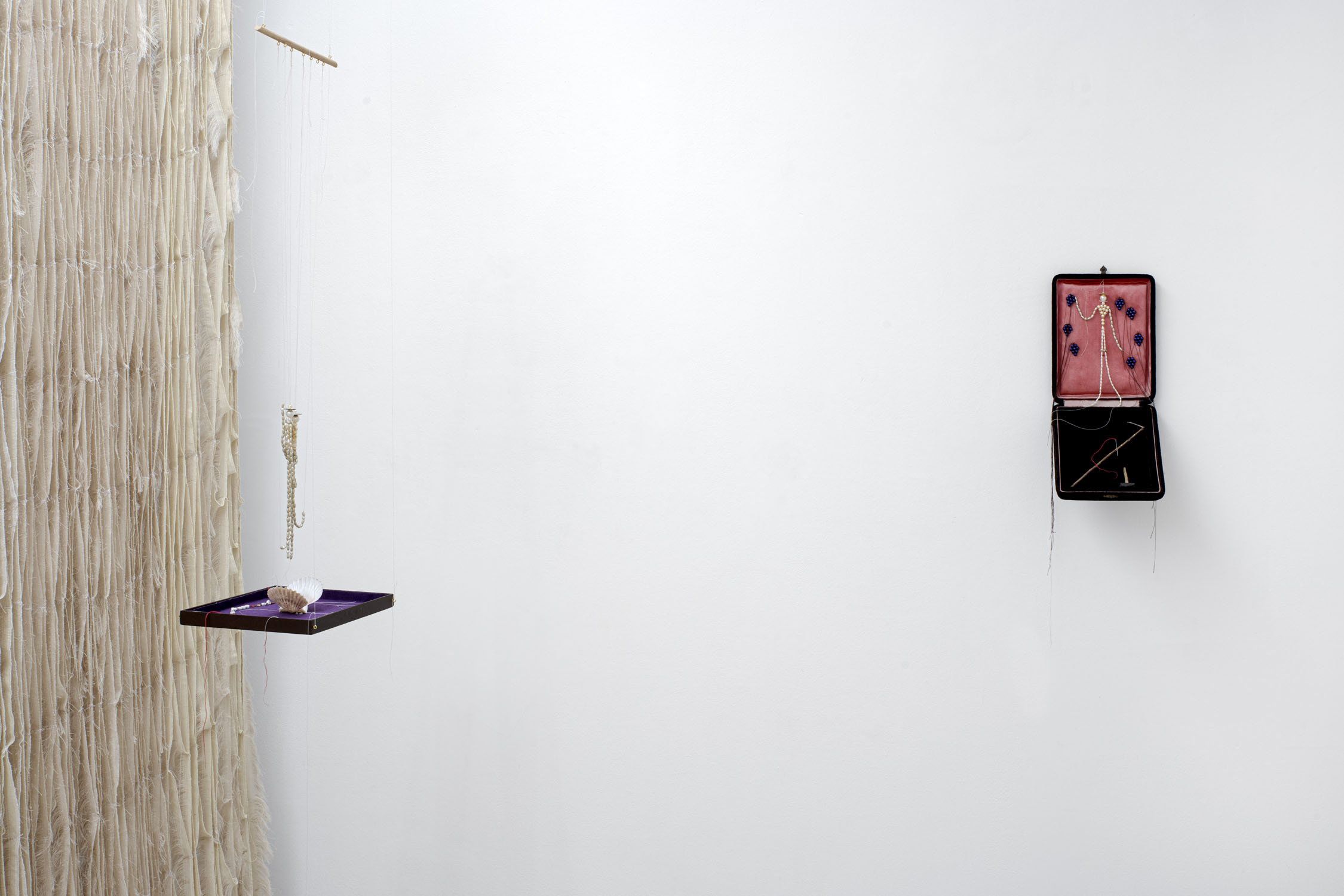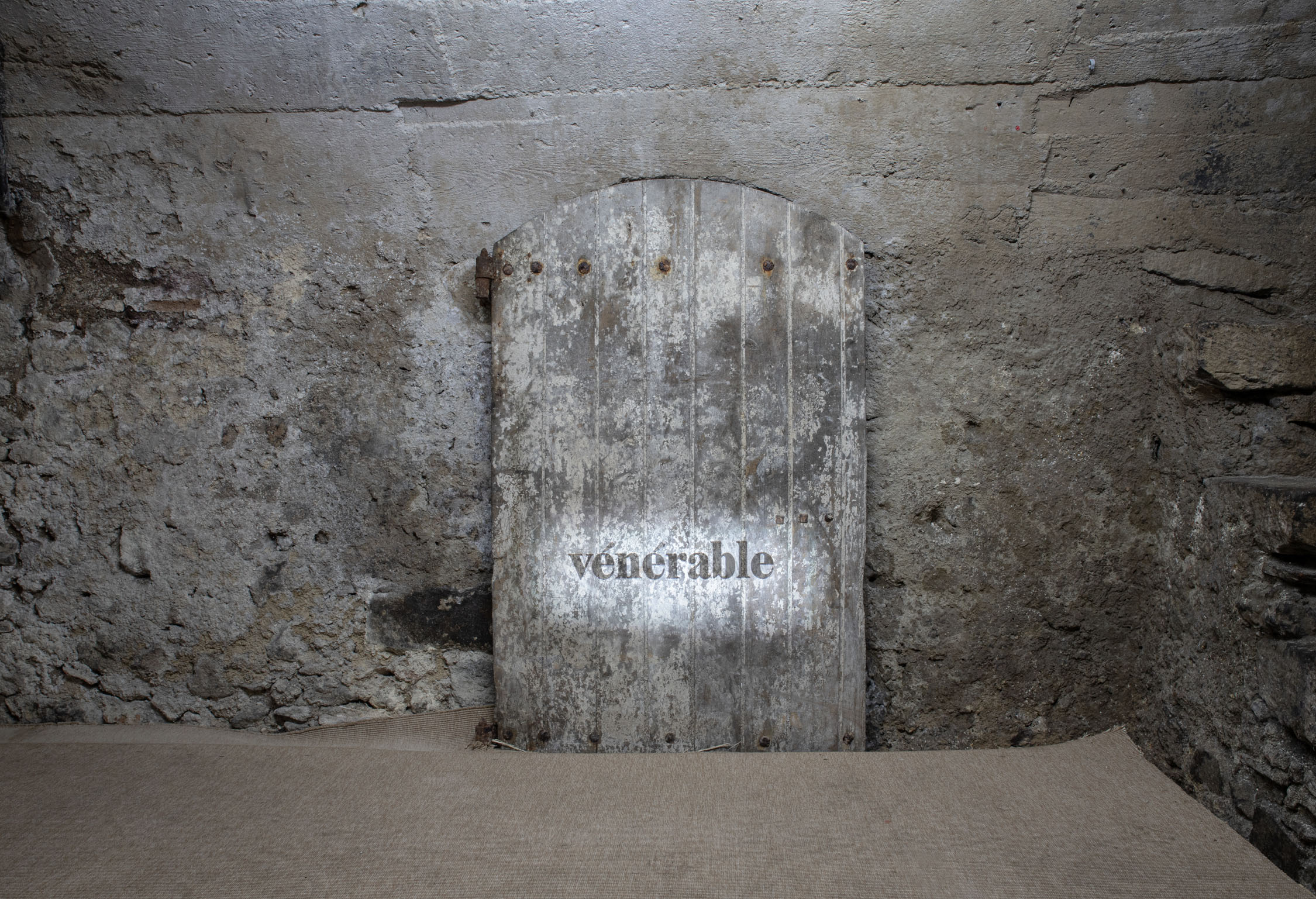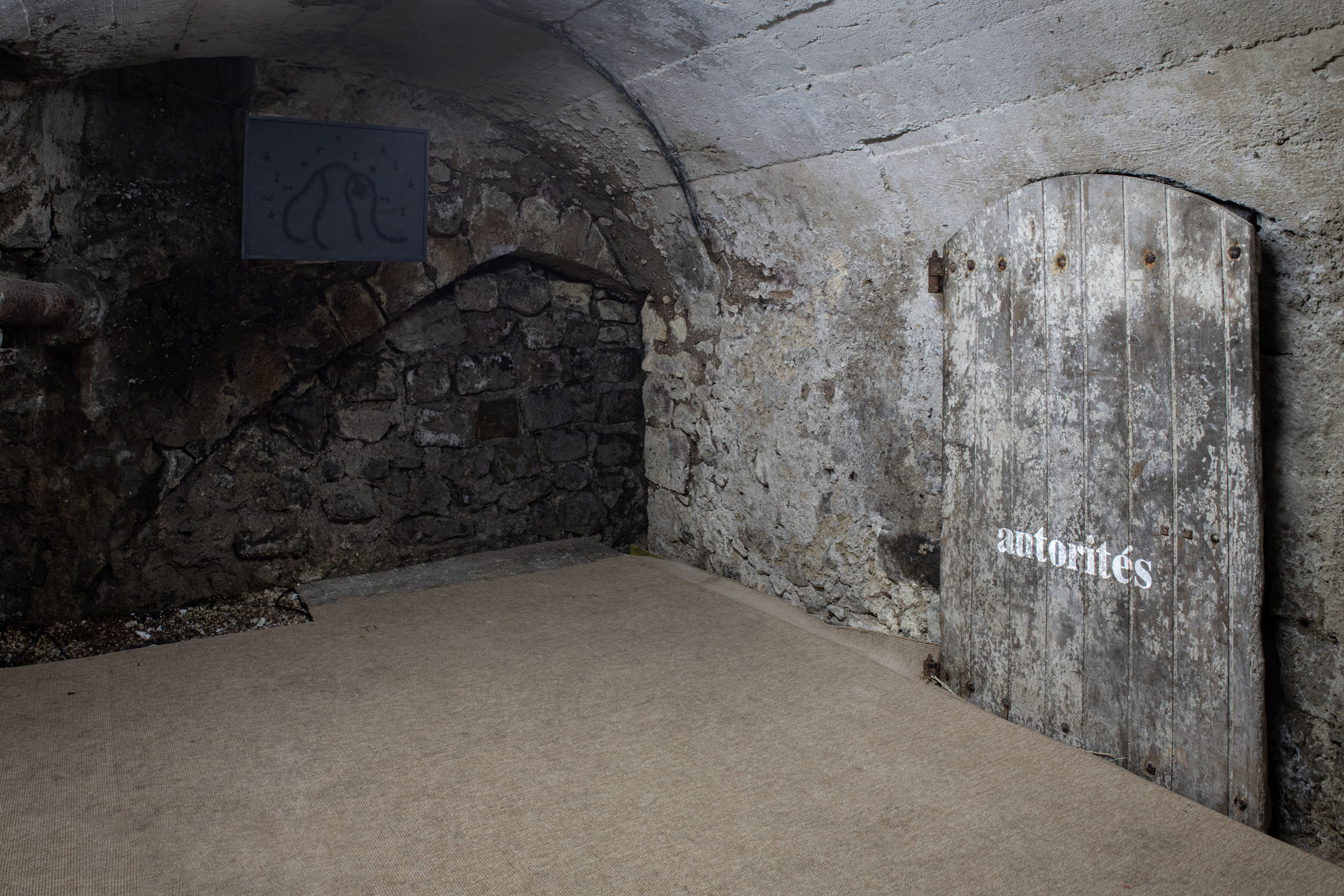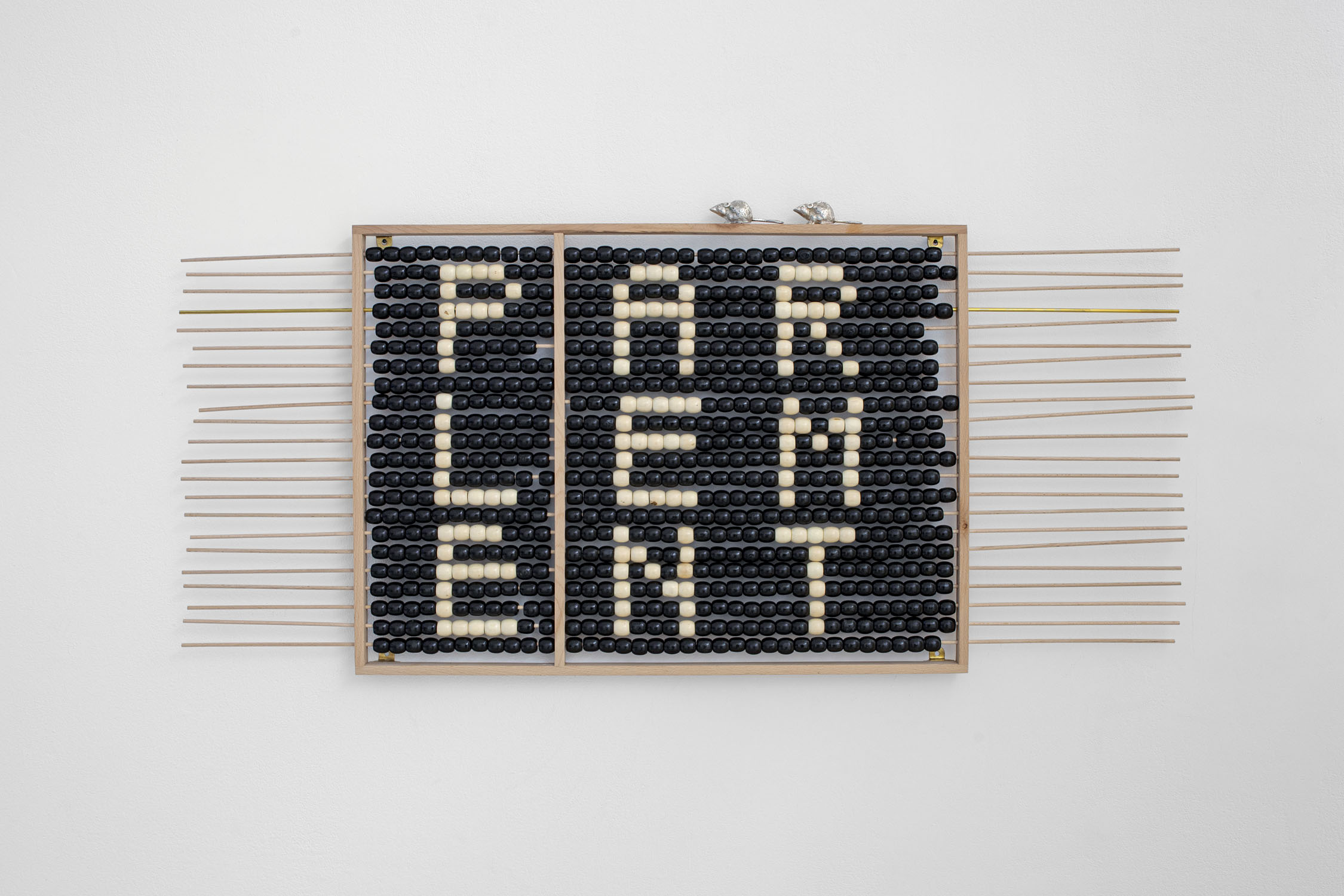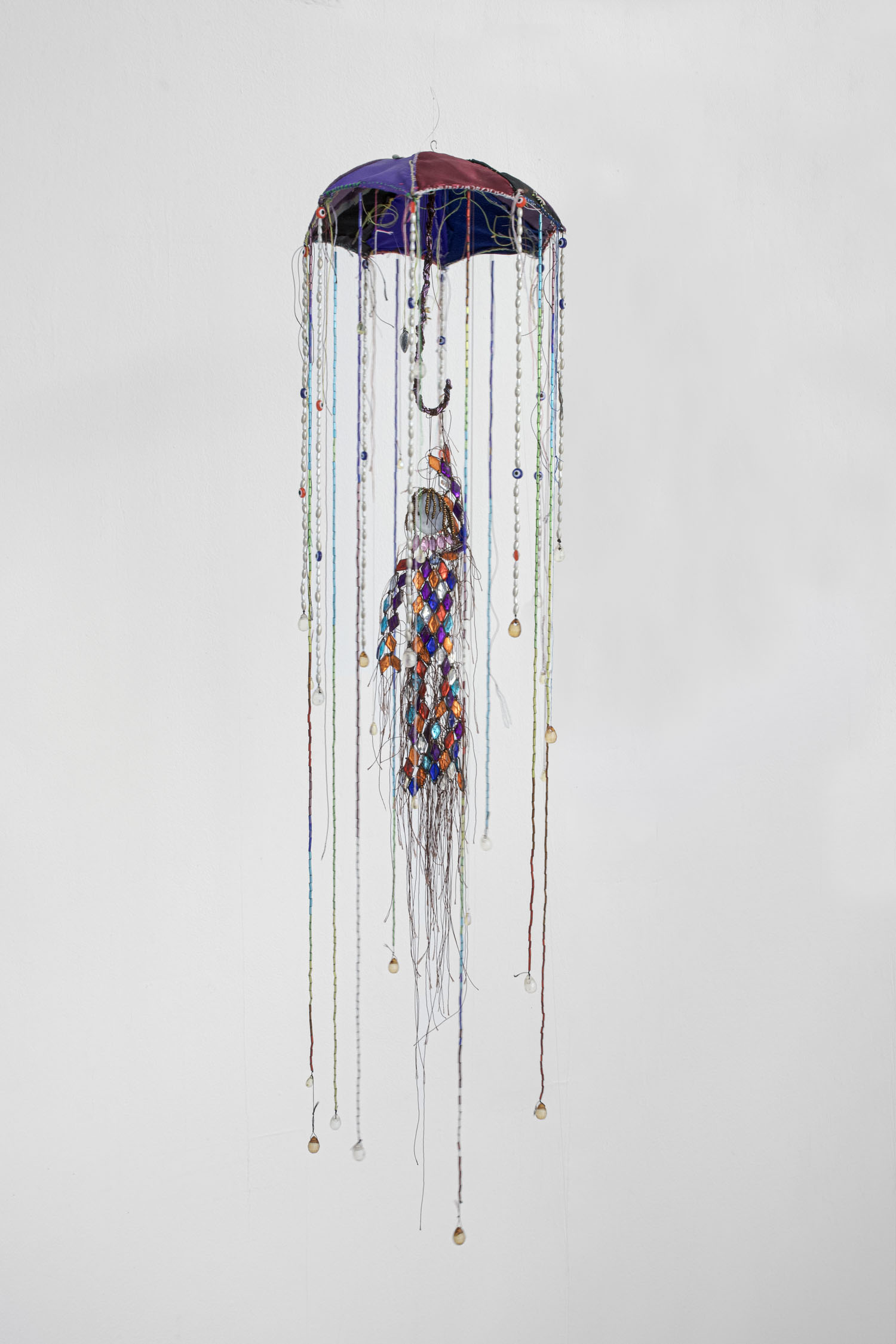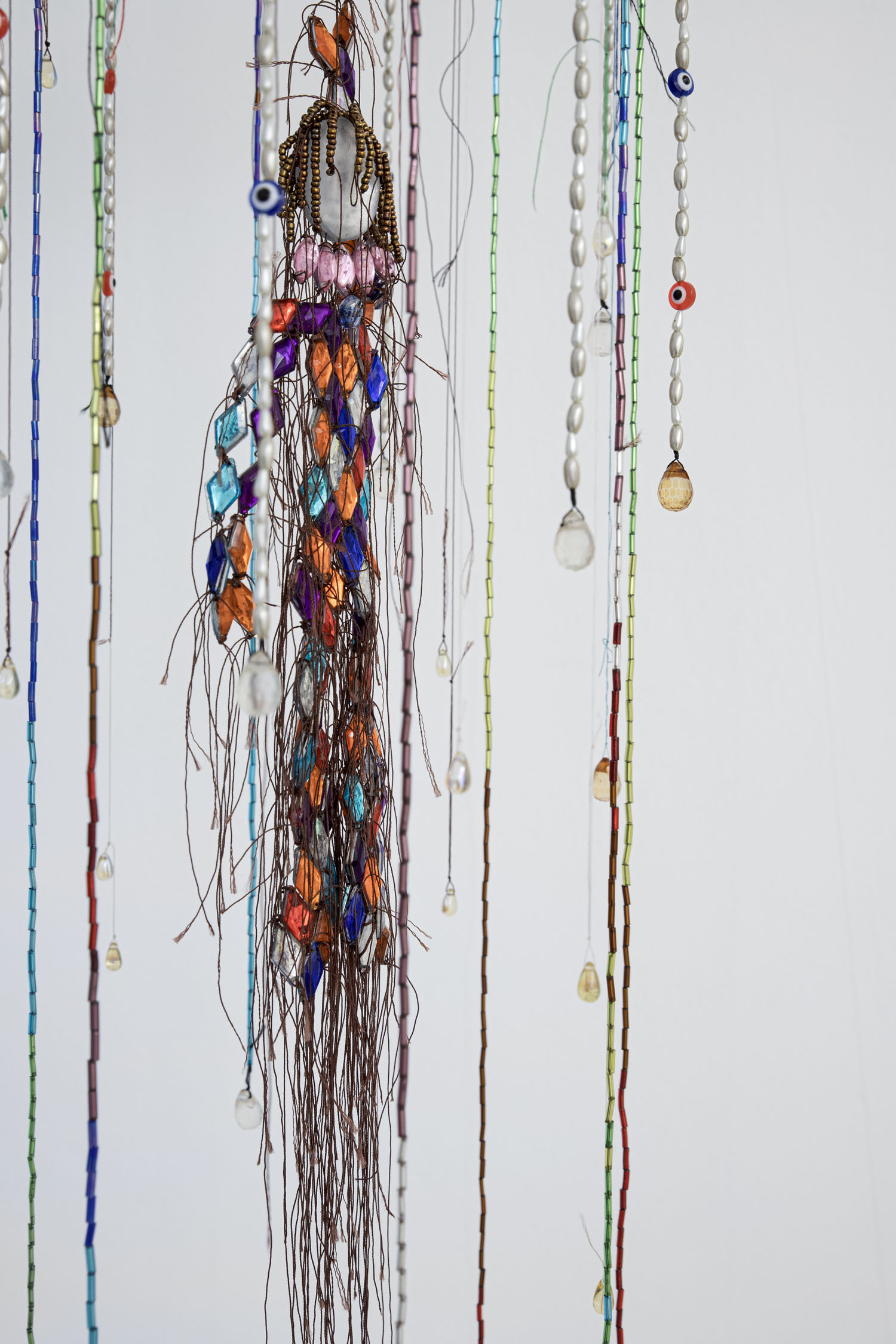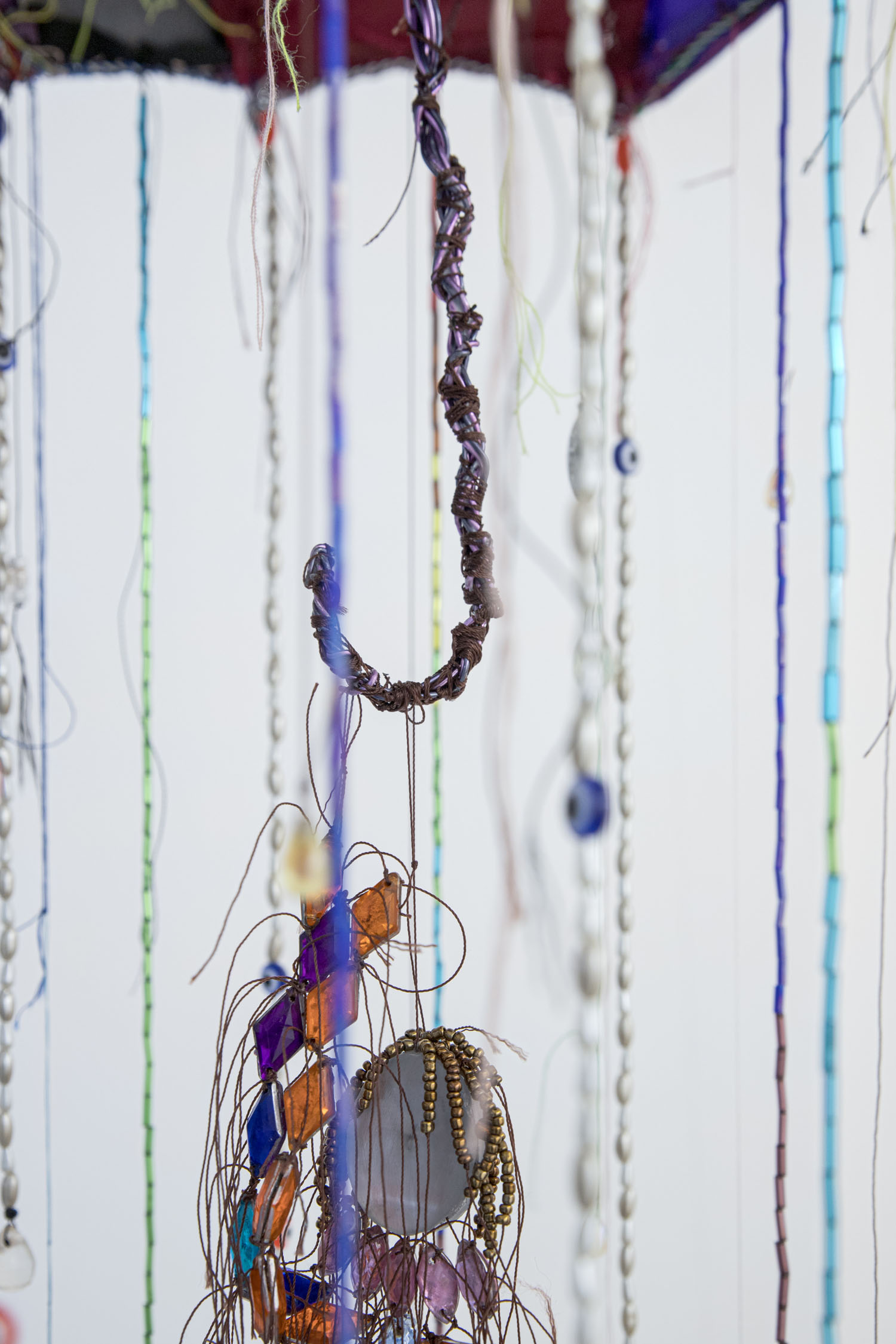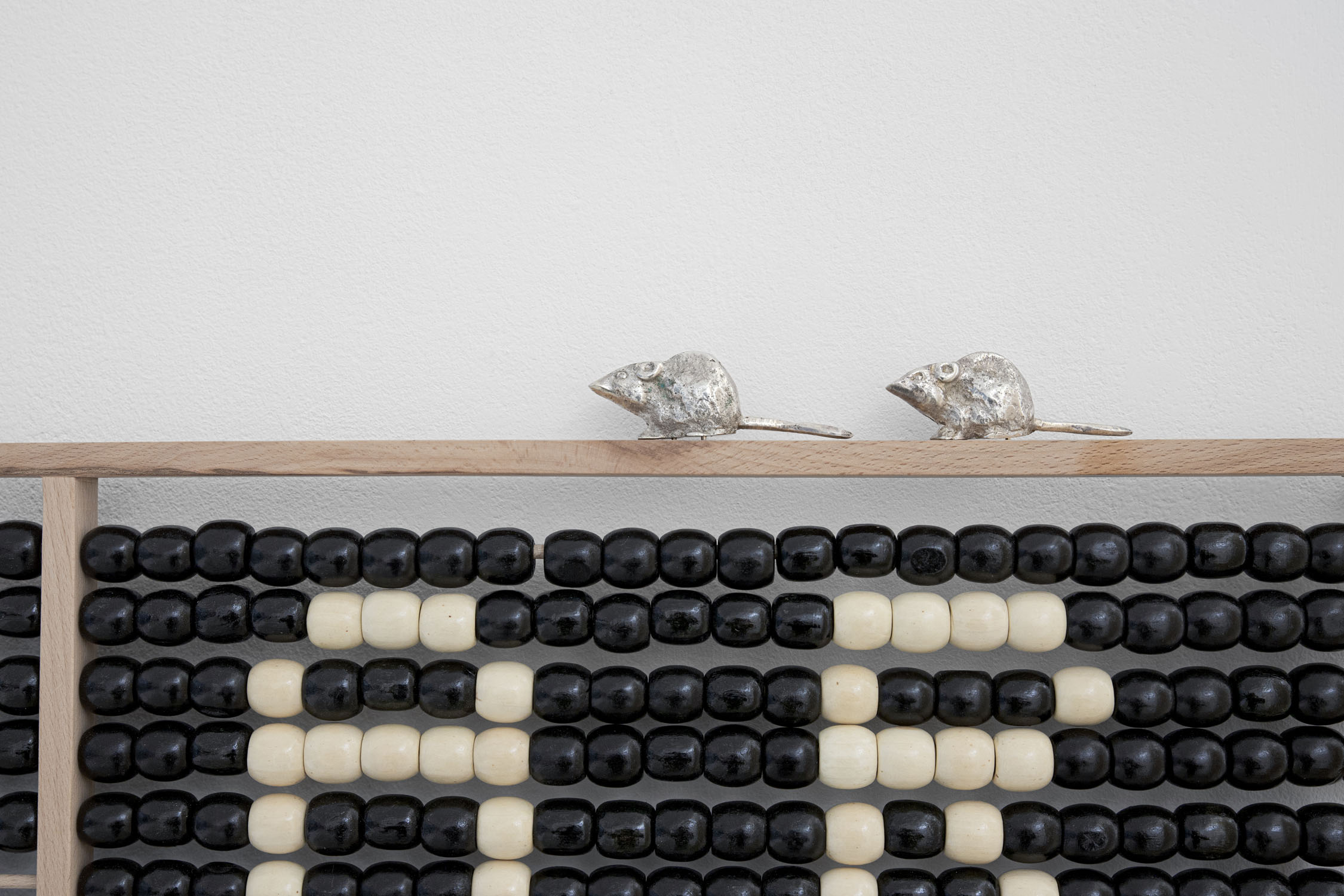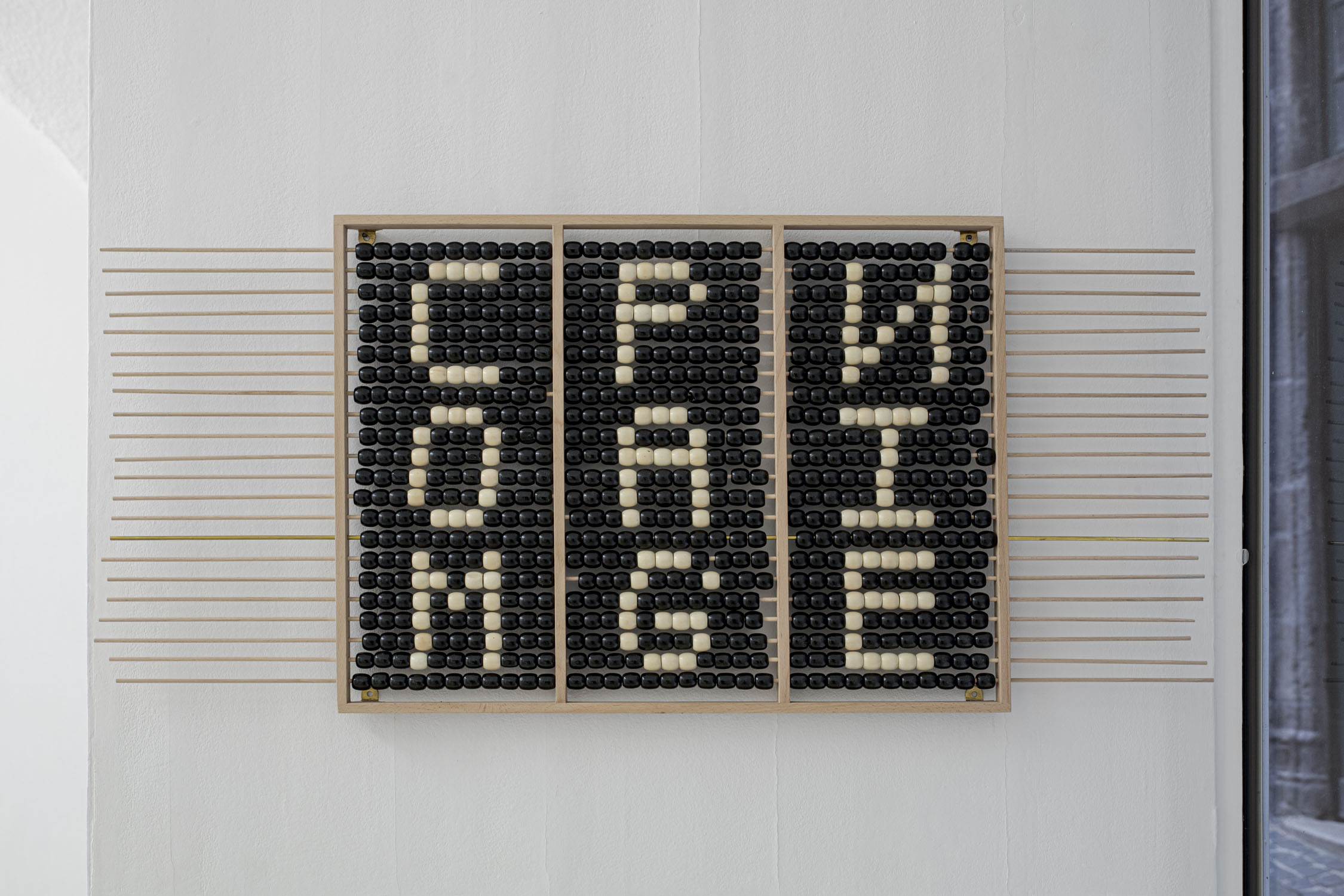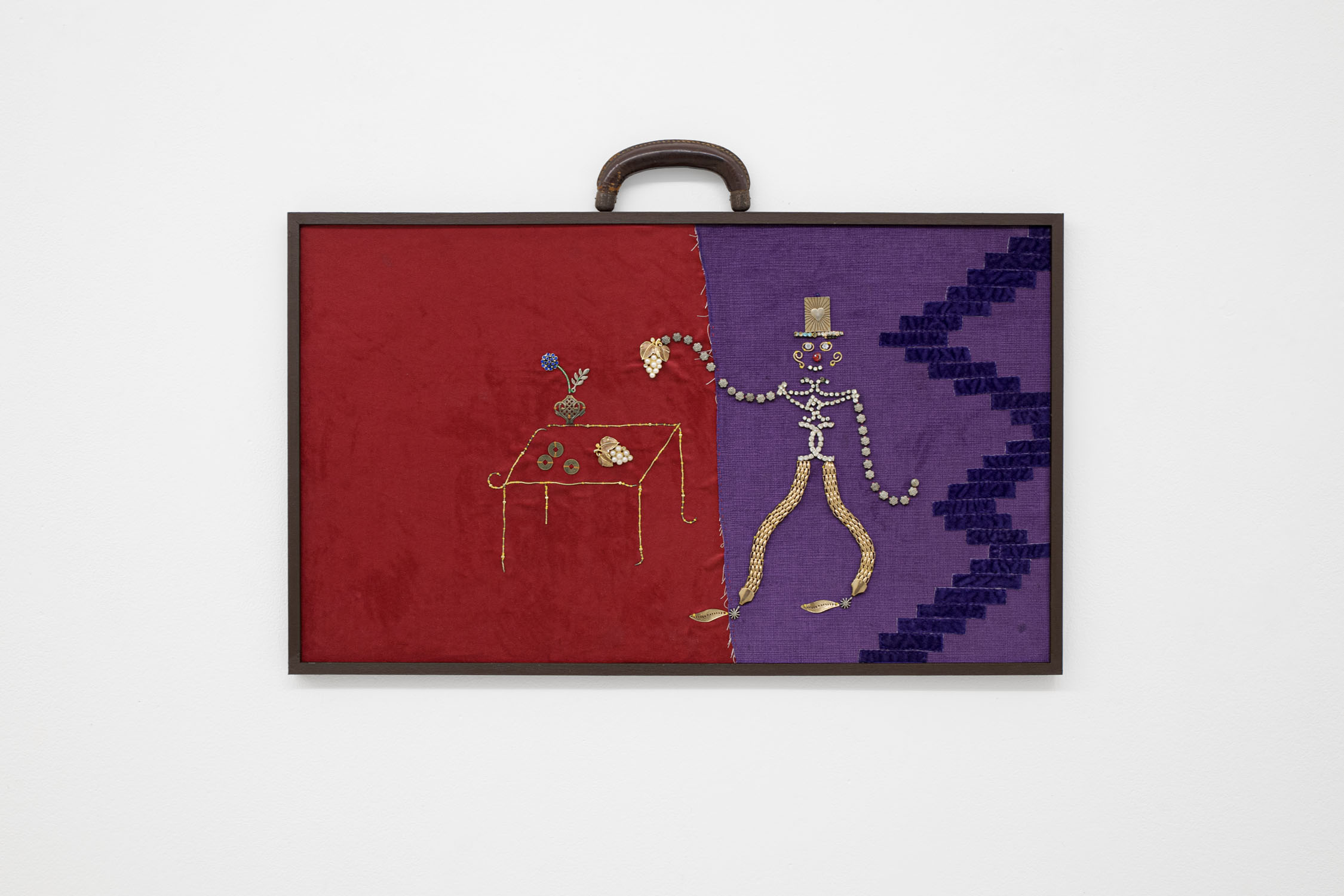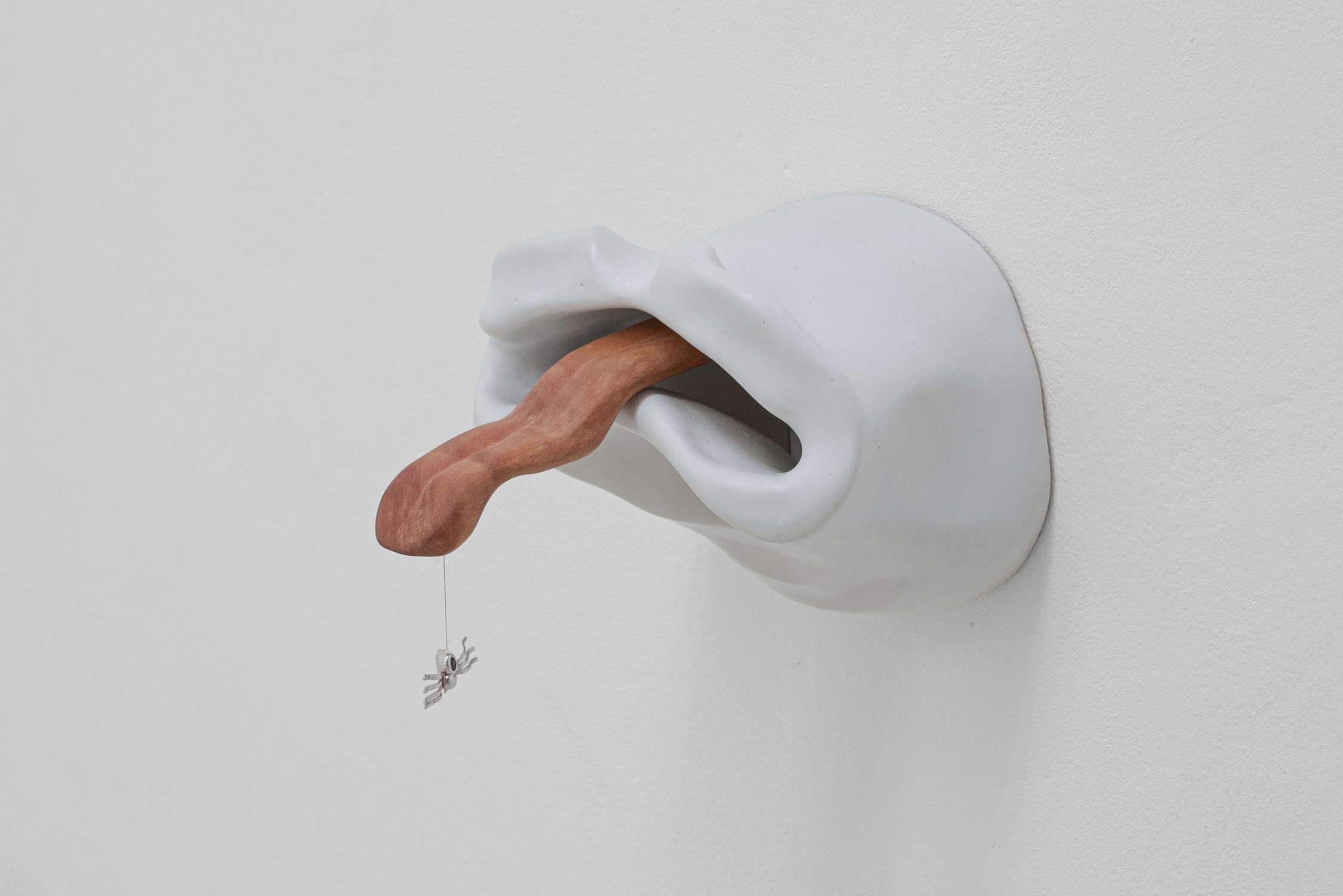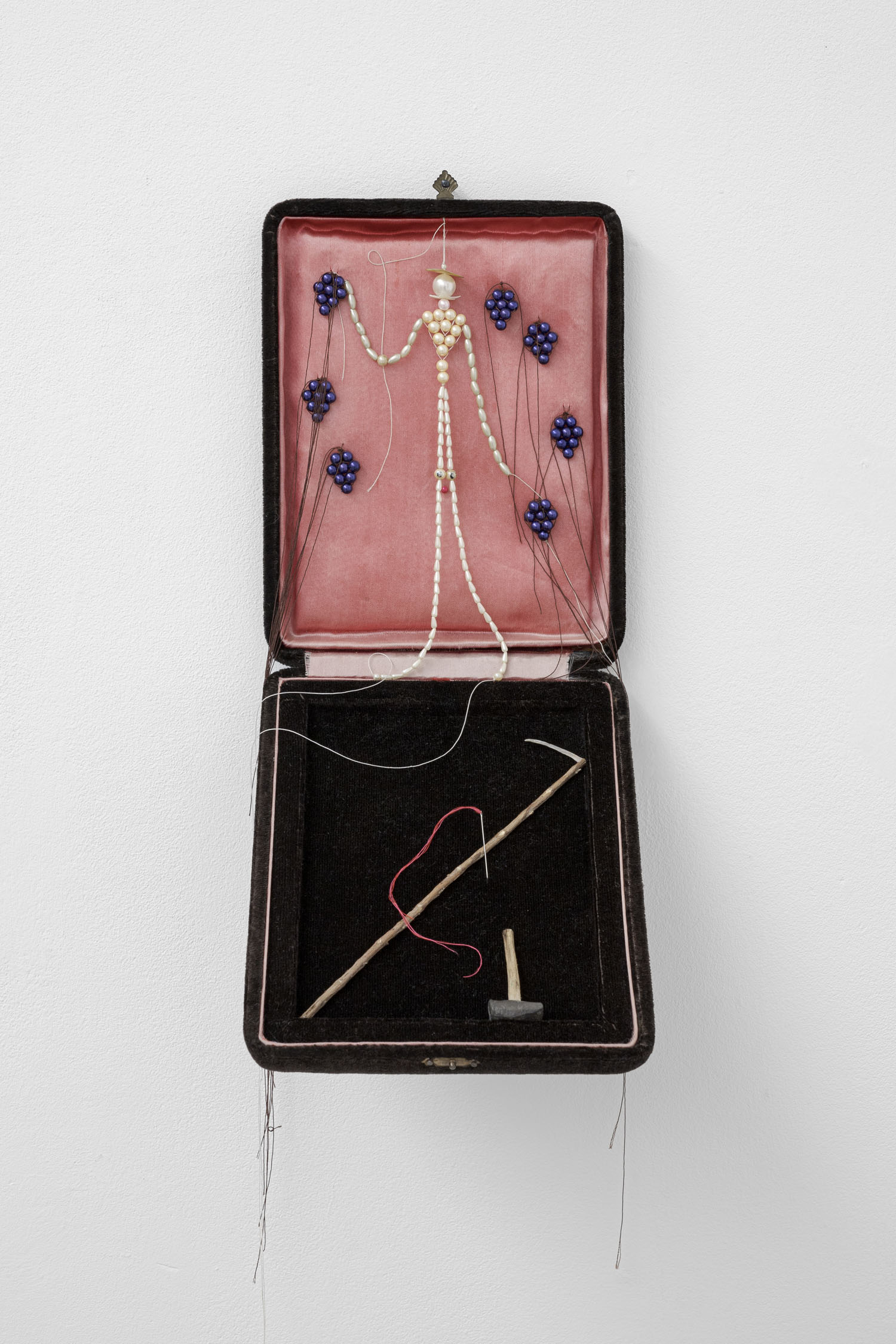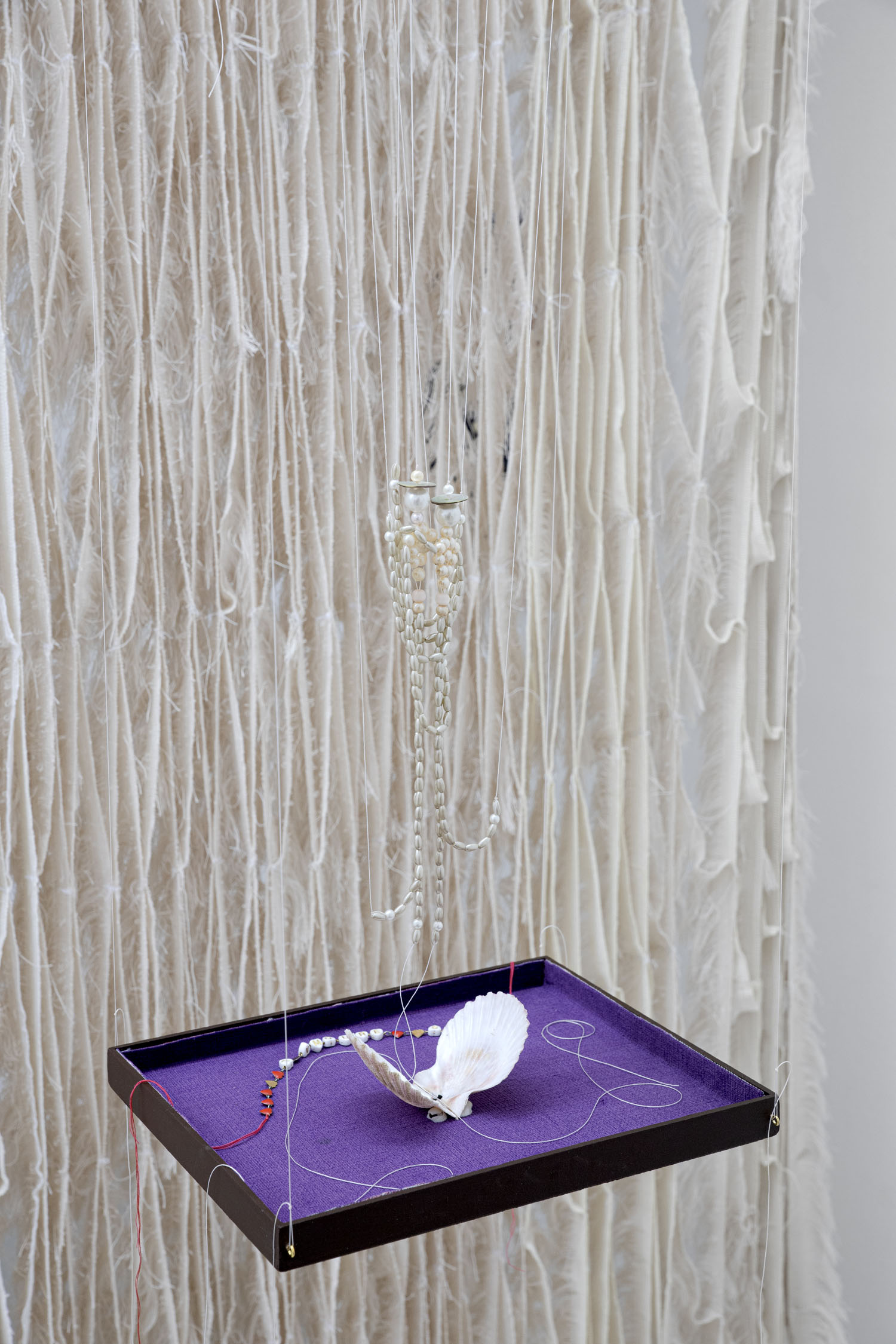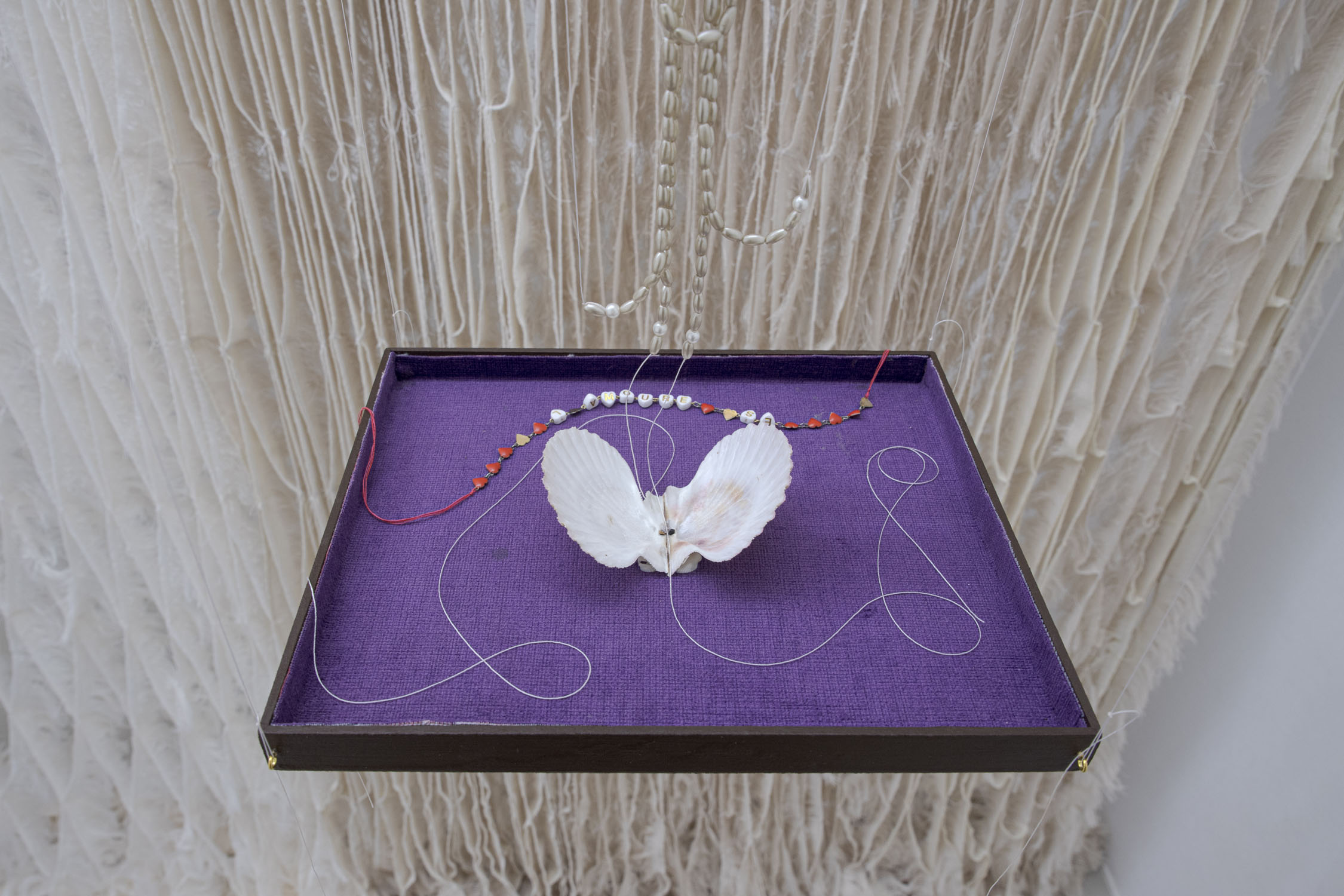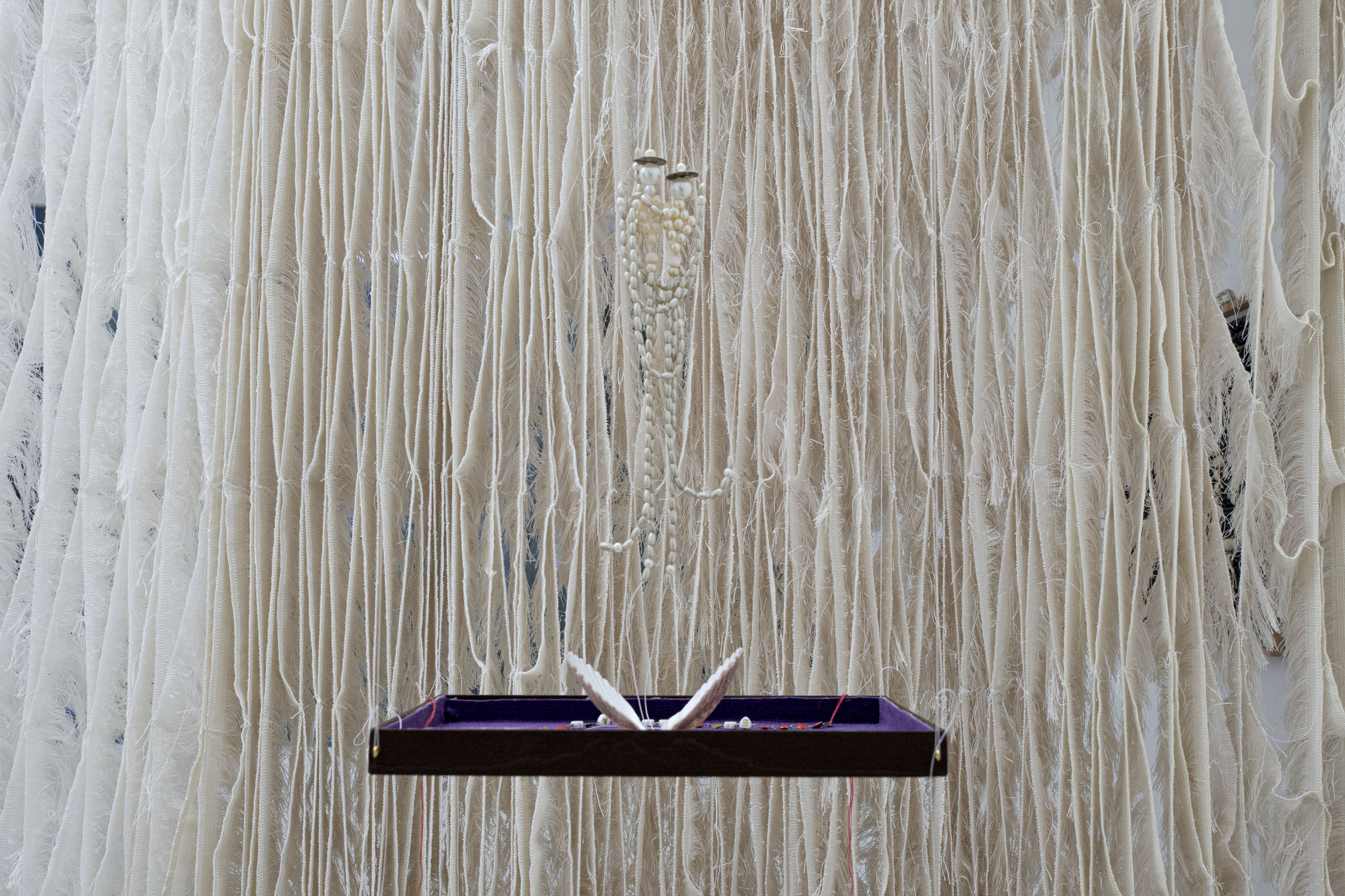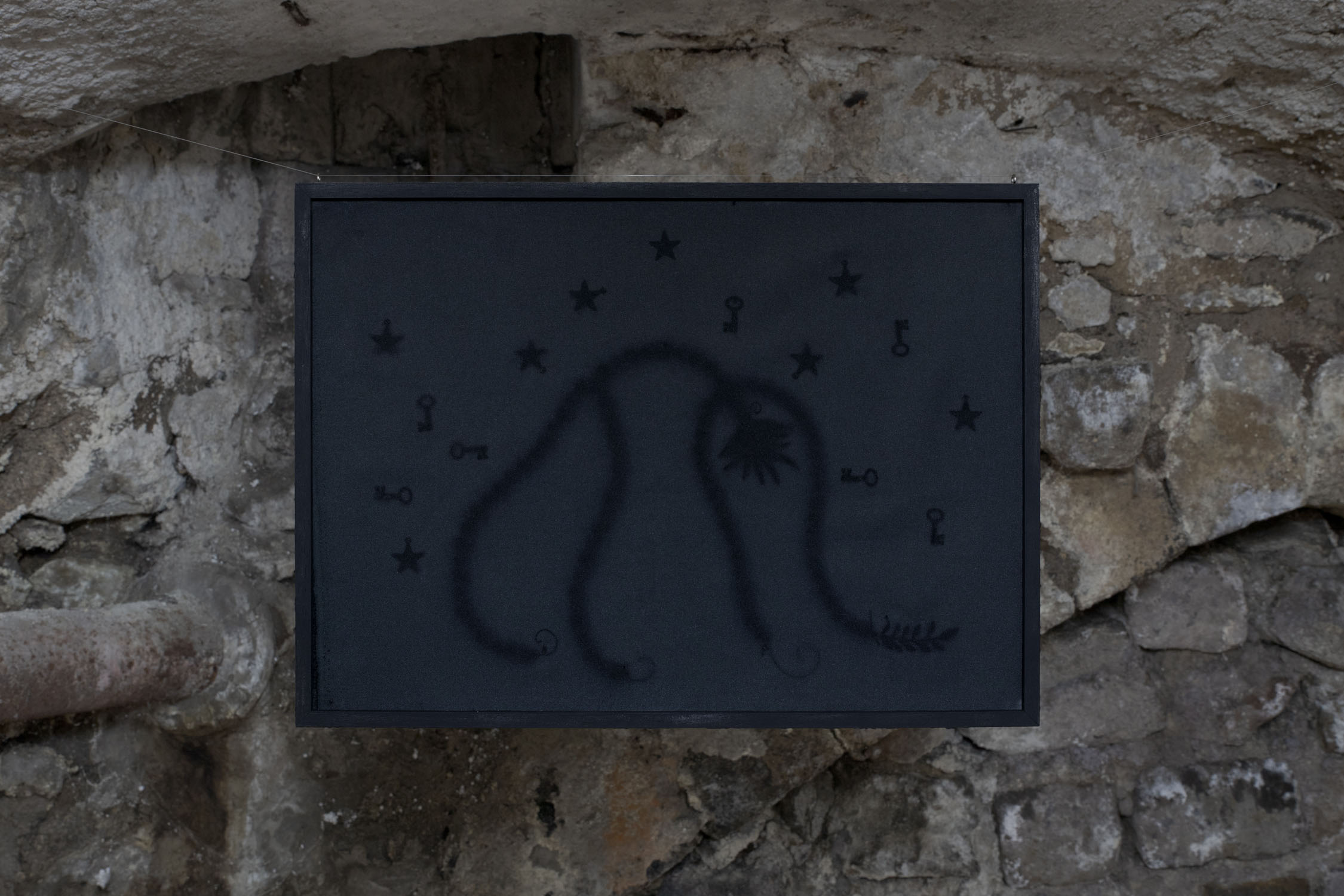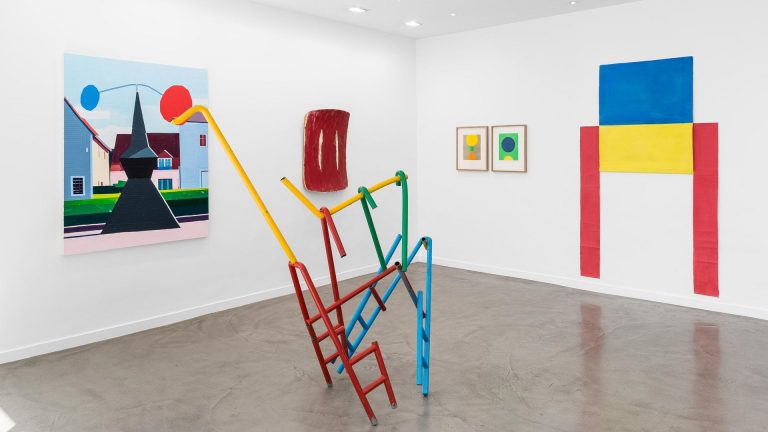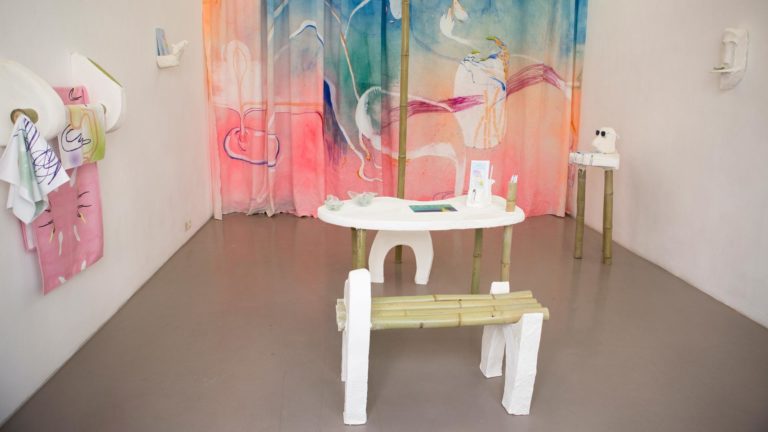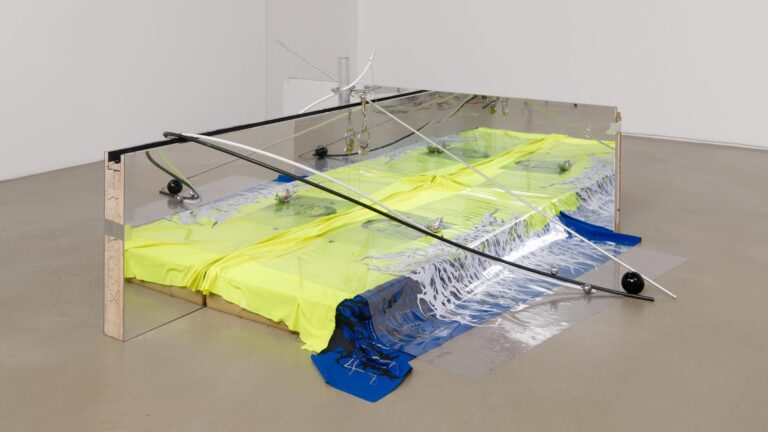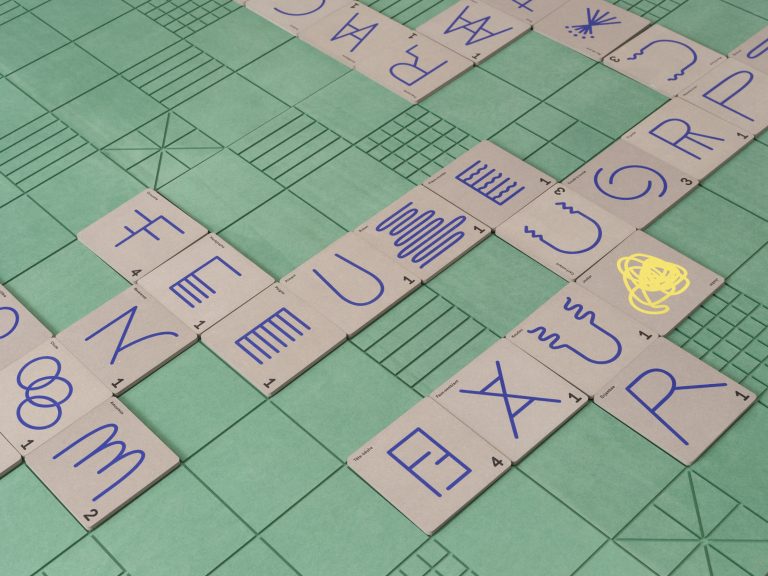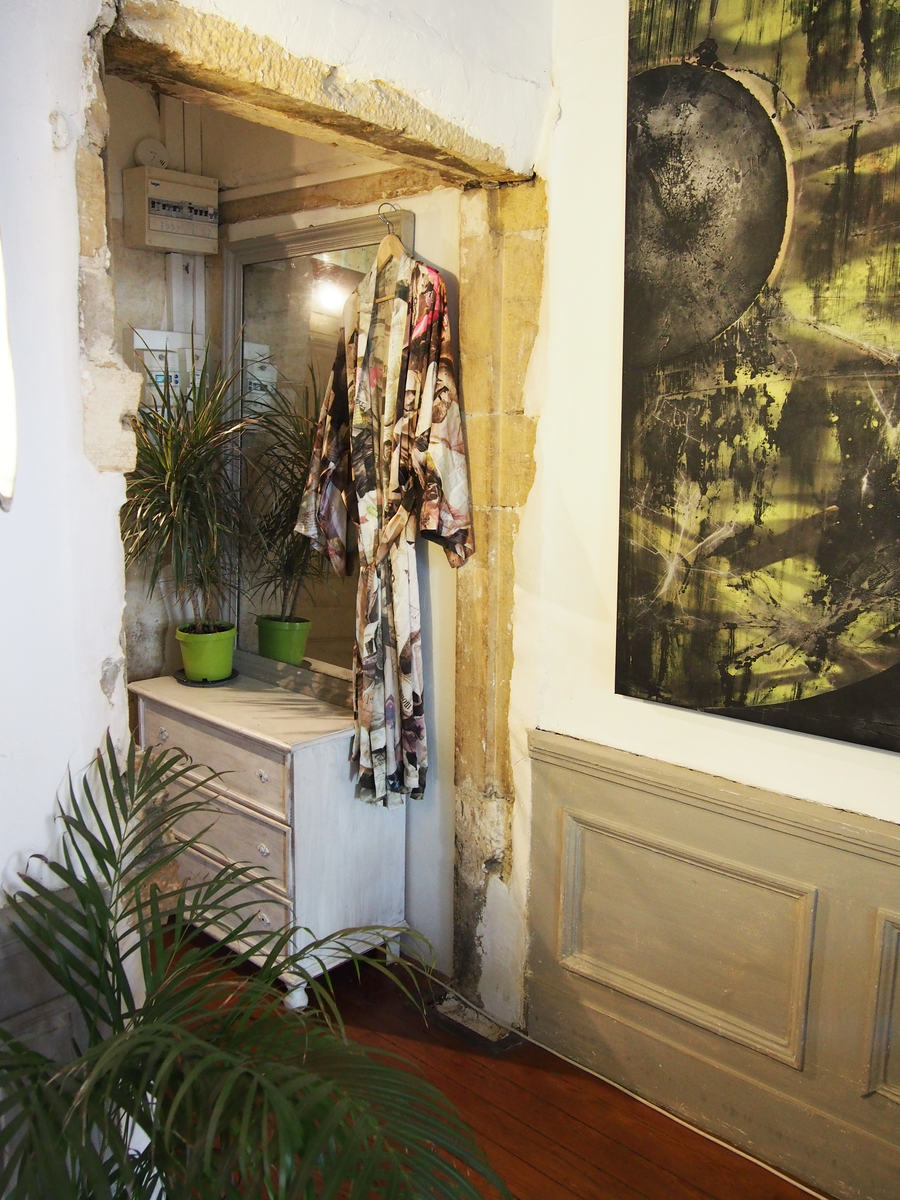In preparation for exhibition, Matisto will be in residence at Chalet Lecoq, a facility run by the City of Clermont-Ferrand.
In autumn 2025, on the occasion of Gina Proenza’s solo exhibition at the Salle des bains (Lyon) and production residency at Treignac Projet, we will be organising a discussion at Lieu-Dit, Clermont-Ferrand. Date to be announced.
Trabalengua—a Spanish term that translates to tongue twister—is a compound word formed from the verb trabar, meaning “to hinder or obstruct the movement of something,” and lengua, meaning “tongue” or “language.” This term is fitting for our title not only because it comes from a language shared by the artists and myself but also because it evokes a playful yet provocative twisting of language and meaning—a tension that resonates throughout the works presented.
Gina Proenza twists tongues: in her works, words become characters defying their own definitions, while some pieces quite literally stick out their tongues. This mischievous gesture finds an echo in Matisto’s work, where his characters also escape any fixed categorization. Among the figures populating his universe: the joker, known for eluding any stable meaning; or the fool, who challenges norms by overturning them, embodying his subversive role.
If the mouth can be perceived as a vessel for the tongue—both in its physicality and its orality—then the works presented here act as open mouths, windows into multiple worlds where language, identity, authority, value, and meaning are simultaneously stretched and reconfigured. The performativity of language—both spoken and non—is at play here, echoing the question posed by Judith Butler: “What does it mean for a word not only to name but also, in a certain sense, to perform and, in particular, to perform what it names?” The exhibition could thus be experienced as as a theatrical play unfolding across three interwoven acts that have neither a beginning nor an end, and where mechanisms and the backstage are laid bare.
A curtain drops, dividing the space. Like a trabalengua, it hinders movement while serving as a backdrop that both conceals and reveals. The author of this work, Gina Proenza, plays with the codes of scenography and restricts the movement of bodies. Similarly, this scenographic gesture appears on another scale in Matisto’s practice, as his practice is populated with puppets—whose world is inhabited by puppets—figures he considers self-portraits—both manipulated and capable of transcending our world and its rules through their magical and spiritual energy.
Thus, the first act focuses on the defiance of authority and definition. The initial works encountered question the mechanisms of language and power. PARLEMENT ; COMPAGNIE (parliament ; company)—these words appear in a series of abacuses crafted by Gina using wooden beads from a car seat cover (Parlement, 2024; Compagnie / No Pain, 2024). These works highlight the absurdity of using a politicized lexicon to designate communities of species (a parliament of owls, a company of partridges), while the number of beads renders the abacus unusable, disrupting both its function and the fixed meaning of the words.
Not far away, a faceless harlequin spins in Matisto’s universe, suspended from an umbrella (Lágrima de Payaso, 2024). This figure, an echo of the joker (playing cards) and the fool (tarot), is inherently defiant: it escapes norms by surpassing them, entering another realm—both spiritual and material—while maintaining its freedom as a wild card, devoid of fixed value. Gina exposes societal mechanisms of exclusion through materials imbued with familiarity and tenderness, while Matisto amplifies the emotion contained in the found objects he assembles—beads, trinkets, shells, toys, fabrics, waste, and more—thus reinforcing an emotional and spiritual charge that transcends the pragmatism and violence of contemporary society. The droplets surrounding the harlequin can therefore be seen as tears, and crying as an act of power.
The exhibition opens with silent and discreet languages, initiating a second act centered on the duality between revelation and concealment. A wooden-carved tongue emerges from a ceramic mouth protruding from the wall (Gina Proenza, La chute des corps, 2025). The double meaning of “langue”—both a bodily organ and a system of expression—takes shape here. Falsely perceived as the body’s strongest muscle, the tongue seems to meet its own limit: both a bearer of speech and hindered by it. A childlike yet provocative and sensual gesture, the artwork reveals a tension between power and restraint.
“The tongue is an elusive animal that refuses to be tamed. It licks, bites, spits, insults, but it also heals, comforts, and sings,” writes author Gabriela Wiener. Animality is certainly present, but so is the desire to console, as seen in Matisto’s lovers (Politics de L’amoureuxse, 2025). The tongue, elusive yet tangible, becomes a magic trick, and the magician a key figure in Matisto’s bestiary. Hanging on the wall, a framed handle—reminiscent of a bag of tricks—seems to contain the author of deception (Matisto, Mago New Age, 2024).
The final act is dedicated to both articulation and disarticulation. In Gina’s video, words flash rapidly across the screen (Judging Worms, 2023). Any attempt to follow and find meaning proves futile—they are merely an alphabetical sequence of terms extracted from a 16th-century trial, in which earthworms were expelled from a field after being accused of ruining cereal crops. Through fragmentation and reconfiguration, Gina highlights the theatricality of legal language, whilst freeing words from their meaning. For Matisto, what is exhibited in the basement is no longer a figure woven from beads and cherished relics, but merely its trace (Sombra de Estrella, 2025). This work is rooted in a fleeting yet familiar encounter: each morning, he passed a street vendor whose goods, left too long in the sun, imprinted pale shapes onto the boxes they once occupied. One day, the vendor was no longer present, expelled by a police intervention. Both artists engage with archives and memory, deconstructing and reassembling them in search of new meaning.
Thus, Trabalengua does not merely present obstacles—it also draws a unique energy from them. In the twisting of tongues, in the constrained movement of bodies, something escapes: a language without words, an inhabited silence, an invisible presence that lingers in the materials and forms. Like a tongue twister repeated over and over until it loses all meaning, words ultimately become mere sounds, a sensation in the mouth, a game detached from sense, transforming into pure movement—a performance.
BIOGRAPHIES
Matisto (1987, Salta, Argentina) is a self-taught artist whose practice encompasses collage, objects, photography, video and installation. He participated in the 2ᵉ edition of the Boca de Fuego/Estudios Abiertos residency at the MUNAR art space in La Boca, Buenos Aires (2021-2022). In 2013, he received a grant from the Fondo Nacional de las Artes to take part in the creative lab run by curator and visual arts teacher Carina Cagnolo in Salta and Jujuy. Between 2011 and 2013 he also attended workshops with Andrea Elías, Guadalupe Miles, Guadalupe Creche and Adriana Bustos, among others.
He currently lives and works at the Museo Campo Cañuelas artists’ residence in the province of Buenos Aires. Recent exhibitions include Turlututu Chapeau Pointu, at Colette Mariana + Cocotte, Paris, France (2024); PrisMa, accompanied by poetry by Dani Umpi at PM Galería, Buenos Aires (2023); Arlequín, at Observatorio Atelier, curated by Raúl Flores, Buenos Aires (2021); and Inflexiones de la mirada, at the Museo Histórico del Norte, Cabildo de Salta, curated by Roxana Ramos (2022).
In 2016, Matisto won the 2ᵉ Prix Acquisition in the photography category at the Salón Provincial de Artes Visuales de Salta.
Gina Proenza (1994, Bogotá, Colombia) lives and works in Lausanne. She graduated from Ecal (École Cantonal d’Art de Lausanne) with a Bachelor’s degree in Visual Arts in 2017 and from a Certificate of Advanced Study in Dramaturgy and Text Performance (La Manufacture and l’UNIL, Lausanne, 2022).
She has been showing her works in various art places such as independent art spaces, contemporary art centers, museums, or public places. In parallel to her studio practice, she co-founded and directed the artist-run space Pazioli in Lausanne (2015-2017) ; was part of the curatorial team of Forde in Geneva (2020 – 2023) and the programmation team of Tunnel Tunnel in Lausanne (2025). As well as organising exhibitions, Gina Proenza teaches sculpture and co-runs a workshop on contemporary literature as part of ECAL’s Bachelor in Visual Arts.
Gina Proenza has presented solo shows at Musée Cantonale des Beaux-arts de Lausanne (2024), Musée des Beaux-arts de La Chaux-de-fonds (2023), KunstHalle St-Gallen (2023), Centre d’art Neuchâtel (2020), Centre Culturel Suisse (Paris, 2018) or LISTE Art fair (Basel, 2018) and exhibited in group shows such as Last Tango in Zurich or PS120 in Berlin.
She has been awarded with Prix Manor Vaud (2024) or Kiefer Hablitzel Foundation (2021) and has been included in private and public collections such Swiss Office Fédéral de la Cuture (2024), Fond Cantonal d’art de Genève (FCAC, 2022), Musée des Beaux-arts de Sion, (2022), Art Môtier (2021) or Musée Cantonal des Beaux-arts de Lausanne (2020).
